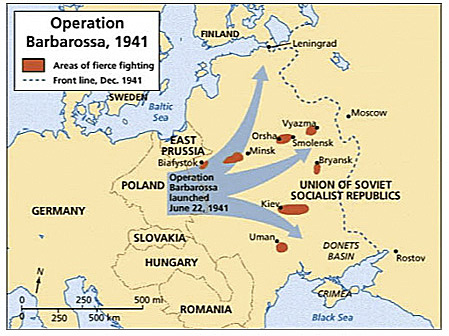
- General History, Random Notes
World War II (Part II) — Deception, Espionage, and Total War
- Operation Barbarossa — A Re-Enactment 70 Years Later
SPECIAL BULLETIN — from Radio Berlin a Special Report!
June 22, 2011 7:00 AM
We are sorry to interrupt your programming. It is the German Fuhrer, Adolf Hitler, speaking:
“…At this moment a march is taking place that for its extent, compares with the greatest the world has ever seen. I have decided again to place the fate and future of the Reich and our people in the hands of the soldiers…”
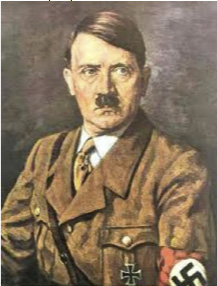
Just before dawn today the mightiest battle in the annals of war has began. Hitler’s Wehrmacht has launched a massive invasion of the Soviet Union. The Russian expanse has been traversed, over a nearly 1,000-mile front, from the Baltic to the Black Sea, with a blitzkrieg invasion force consisting of 3.3 million German soldiers, 3,300 tanks, including several Panzer divisions, and 600,000 other motorized and armored vehicles.
Army Group North is headed toward the Baltic to protect the iron ore shipments from Sweden and capture Leningrad; Army Group Center, led by German Panzer General Heinz Guderian is aimed like a dagger toward Moscow; Army Group South points to the Ukraine and the Caucasus to capture the Soviet oil fields…
The Soviet army is suffering heavily, several divisions of the Red Army have been completely annihilated, over 2,000 Soviet planes destroyed on the ground, hundreds of tanks wiped out…Byelorussia overrun…within four days nearly 200 miles of Soviet territory will be overrun by the Wehrmacht!
This is what actually occurred exactly 70 years ago on June 22, 1941, and I wrote the brief and unequal imitation above in the style of Orson Wells’ radio broadcast of War of the Worlds that also took place many years ago. It is intended only as a “Today in History,” news capsule! Hitler’s quote is accurate, as are the figures (although rounded up) and the brief description as to what happened on that day.
The invasion of the USSR, Operation Barbarossa, was one of history’s turning points, and it affects us to this day.

The Wehrmacht Order of Battle was as follows:
Army Group North was commanded by Field Marshall Wilhelm Ritter von Leeb and its objective was to capture the Baltic seaports and converge in Leningrad.
Army Group Center was led by Field Marshall Fedor von Bock and it aimed to destroy the Soviet nerve center itself, Moscow.
Army Group South headed by Field Marshall Gerd von Rundstedt was to overrun the Ukraine, capture Kiev, and conquer the Caucasus region.
For Hitler there were several main objectives. The two most immediate goals for him were in the southern and northern flanks. He wanted his Panzers in the South to capture the Ukraine, the breadbasket of the USSR and the protection of the Rumanian oil fields. Victory in the Ukraine and Kiev would also open the way to the Soviet oil fields of Baku in the Caucasus, Grozny in Chechnya, and the Caspian sea.
In the North, Hitler wanted his army to protect the Baltic Sea route through which Swedish iron ore, vital for Germany’s armament industry, was transported. Leningrad had to be captured to protect this northern sea route and Scandinavia.
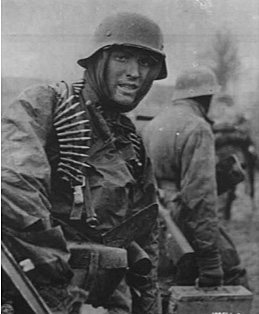
But Hitler’s generals were adamant that Moscow had to be captured both for strategic and psychological reasons. Hitler wanted the Center campaign to yield as to accomplish his immediate objectives in the north and south. By July 30, since victory on all fronts was not achievable, Hitler wanted Army Group Center to slow down and become a tactical reserve for either Army Group North or South. And on August 18, Hitler issued Directive 34, which ordered the Wehrmacht’s main objective to be the southern mission. Despite the objections of Field Marshall Walter von Brauchitsh, the Army Chief of Staff, the Southern army, reinforced by General Heinz Guderian’s Panzers, rolled south. The thrust was succesful and Kiev, capital of the Ukraine, capitulated to Generals Guderian and Rundstedt. Hitler turned down Stalin’s peace fellers.
But Hitler now was more confident and he went along with his generals’ wishes in the Center theater of war. On September 6, Hitler changed course and ordered his army to capture Moscow. By October 6, 1941, barely four months after the launching of Operation Barbarossa, the Soviet Union had lost 3 million men, more than the entire Red Army possessed at the beginning of the war, but the Russians kept coming. The German High Command mistakenly believed that the USSR had no further reserves and that Moscow could be conquered before the winter set in. They were wrong on both accounts. Fresh Siberian troops were moving west.
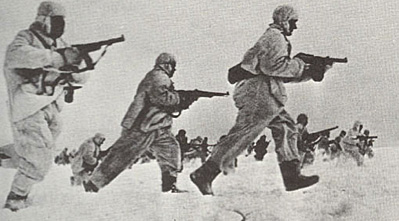
These Siberian reinforcements (photo, left) were the seasoned troops who had defeated the Japanese in Mongolia at Khalkin Gol and Lake Khasan at the prelude of World War II, and this army was led by the best Russian general, Field Marshall Georgi Zhukov. The Battle for Moscow was stalled, and by December 5, 1941, Stalin had given permission for the reinforced Red Army under Zhukov to begin the offensive. The Wehrmacht soldiers and war machine were shocked by this offensive, not used to the Soviet winter and -40 degree Fahrenheit temperatures!
Because Hitler sent his Panzers east, he ceased his operations in the west, and did not invade and conquer England with whom he was already at war. Had he not launched Operation Barbarossa, he could have turned the German Army west, ordered Operation Sea Lion, the invasion of the British Isles — and the United Kingdom could have been history!
The United States, eventually, would have been attacked from the east by the Germans, now possessing not just U-Boats but the captured mighty Royal Navy, and from the west by the Japanese (as in fact happened in the Pacific at Pearl Harbor on December 7, 1941).
Stalin, the red communist Czar, who hated the capitalist West, was ready for this. He was waiting in the wings for Great Britain and the West to be exhausted by the German onslaught. He was preparing for war by the spring of 1942 or autumn at the latest, but he was not ready in June of 1941. He was hoping that by the autumn of 1942, the U.S. would be fighting alone against the Germans and the Japanese and would have been drained of resources. Of course, Stalin expected the Japanese Imperial Army and Navy to be exhausted as well from the loss of men, equipment, and resources before he turned on them!
So the USSR would have been ready for the kill — i.e., the communist conquest of the globe — after the rest of the combatants had annihilated each other. After all, this had been the dream of Lenin, Trotsky, and Stalin — world communist revolution!
Ponder history. The history of the entire world might have turned out very differently had Hitler marched east, rather than west, because of his mad fixation with the need for lebensraum (living space) for the German people, the Thousand Year Third Reich — and Operation Barbarossa!
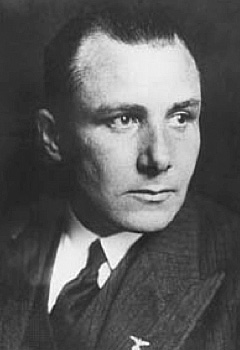
Stalin’s Spy in Hitler’s Inner Sanctum
In his book, Hitler’s Traitor — Martin Bormann and the Defeat of the Reich (2000), author Louis C. Kilzer provides compelling arguments that Martin Bormann (photo, left) was indeed the spy-traitor, “Werther,” spying from deep inside the Third Reich. He was the only person who was able to attend all the meetings in question, or if not, to have his informants and official stenographers record in minute details the German High Command’s top secret transactions and military plans. Thus, he was capable of relaying information to the Russians, even before the German generals were able to review and put them into action! Not even Ultra and the secret decoding of the German Enigma code, Winston Churchill’s secret weapon at Bletchley Park, was able to provide such detailed information and feedback!
Werther was not only able to have secret German military plans radioed to Moscow Center via the Lucy spy ring in Switzerland immediately after Wehrmacht conferences were over, but also let Stalin know who attended the conference and what each of the conferees stated. Werther was even capable of answering specific questions posed by Moscow Center (i.e., “Gisela,” the young, attractive, secretive, Jewish-Russian spymaster, Maria Poliakova). Kilzer shows that only one man was in the key and only position, where he was able to do so, and that man could have only been Martin Bormann, the Fuhrer’s trusted secretary!

Hitler was ruthless, but despite what we may have been led to believe, unlike Stalin, Hitler was not a paranoid individual, and he allowed treasonous activity to thrive within the military (e.g., Generals Ludwig Beck and Georg Thomas), the police (e.g., Heinrich Muller, left-wing, head of the Gestapo and creator of the funkspiel, radio playback messages to Moscow), and even German military Intelligence (e.g., the official Hans Bernd Gisevius, General Hans Oster (photo, left), and Admiral Wilhelm Canaris, head of the Abwehr).
It was not until the serious attempt on his life by Colonel Claus von Stauffenberg at the Wolf’s Lair on July 10, 1944, that Hitler struck back with a vengeance against the conspirators. Only then (and as the Third Reich rapidly crumbled) did he become sadistically vindictive and unforgiving against his opponents within the German military. And yet, Hitler never distrusted Martin Bormann, the “faithful” secretary, “who could get things done.” On April 30, 1945, as he prepared for death, Hitler made Bormann the executor of his will and praised him as his “most faithful party comrade.”
But Admiral Canaris, himself an honorary member of the Black Orchestra, suspected Bormann, the “Brown Bolshevik.” One of Bormann’s mistresses was a communist operative in the German resistance, but that fact was not known at the time, and so Bormann was not suspected. Some of the surviving top Nazis eventually came to suspect Bormann’s betrayal to the Russians — but only as the piece meal revelations came to light during the Nuremberg war crime trials where they were being prosecuted. On the stand, when the prosecutor asked if he believed Bormann was dead, Reichsmarshall Hermann Goring replied, “… I hope he is frying in hell. But I don’t know.”
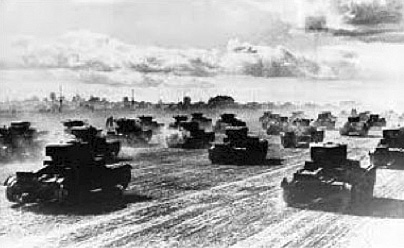
What information did the spy-traitor Werther provide to Moscow Center that was so vital to the Soviets? No less than very detailed and specific military intelligence that led to the defeat of the Wehrmacht at the pivotal Battle of Stalingrad in the winter of 1942-43 and the decisive Battle of Kursk (i.e., the largest tank battle in history) during the spring and early summer of 1943, from which the Third Reich did not recover the initiative in the Eastern front.
The only question remaining is this: Why did Bormann not seek a timely escape route to communist Russia before the final collapse of the Third Reich? That is the sixty-four million dollar question. He might have been guarding his identity even from the Soviets. To escape, he attempted, but to surrender, he probably thought would be futile! He had interpreted and carried out the Fuhrer’s order of genocide of the Jews during the Holocaust and the elimination of the Ukrainians during the Wehrmacht drive to the east. And his betrayal was ideological, but we will probably never have all the answers.
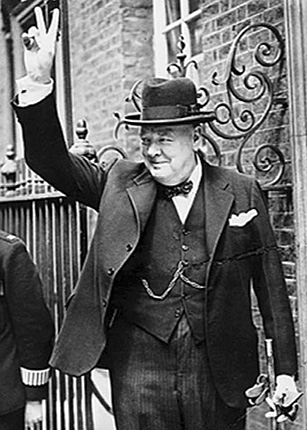
Winston Churchill’s Deception
In another book, Churchill’s Deception — The Dark Secret that Destroyed Nazi Germany (1994), author Louis C. Kilzer tells how British Prime Minister Winston Churchill (photo, left), with the assistance of the Secret Intelligence Service (SIS), conceived of a deception strategy to encourage Hitler to turn his war machine on Soviet Russia in order to save England from the German onslaught. Perhaps the facts have not been incorporated in the official history books to save the British government from possible embarrassment; but that should not be the case. Churchill had to do what he did to put the safety of the British Empire and its citizens above all else.
Churchill had read and studied Mein Kampf and knew to some degree how the mind of the Fuhrer worked. Hitler had an obsession with preservation of the British Empire and Nordic solidarity between the two countries, England and Germany. Churchill knew this and also understood that Hitler’s main objective was to invade and conquer the east and establish hegemony over Central and Eastern Europe. Hitler also detested Stalin and Bolshevism. He also wanted lebensraum (living space) for the German Volk in the east, Poland, the Ukraine, White Russia, etc.
After the Anschluss with Austria, the seizure of the Sudetenland and then the rest of Czechoslovakia, and finally the blitzkrieg and partition of Poland — France and England distrusted the Fuhrer and were committed to war with Germany. The Phony War was a period of overt inactivity but covert negotiations and peace feelers that led nowhere.

After Hitler’s Western conquests — i.e., Denmark, Belgium, Norway, the Netherlands and France — he wanted to make peace with England, so he could turn his attention to the conquest of the east, particularly the Ukraine and the Caucasus, where he needed the Soviet oil fields to run his Panzers. But Churchill refused to make peace openly. Instead, Churchill created a fake, unofficial, and secretive “Peace Party,” which included the Duke of Windsor and the Duke of Hamilton, and with the connivance of the British SIS finally lured Rudolf Hess (photo, left), Hitler’s trusted Deputy Fuhrer, to Scotland to negotiate an Anglo-German peace. Hess’ secretive solo flight was to end with his landing at the Duke of Hamilton’s estate at Dungavel House. In other words, this was a planned mission authorized secretly by Adolf Hitler and manipulated by the SIS. Churchill wanted to hedge his bets and encourage Hitler and the Wehrmacht to turn eastward and abandoned the Battle of Britain. In fact, the day that Hess parachuted into Scotland, May 10, 1941, was also the deadliest for England. Reichsmarshall Herman Goring unleashed his Luftwaffe with a vengeance in an attempt to force England to reach an understanding with Hess while he was in Scotland and before Germany launched Operation Barbarossa, an invasion that began like thunder barely six weeks later.
In this book, Kilzer intimates that later while England waited for the outcome of Operation Barbarossa, the German invasion of the Soviet Union of June 22, 1941, Hitler became convinced that his western flank was protected and that an understanding had been reached between his captive Deputy Fuhrer Hess and the British “Peace Party,” the fake front organization which was in fact orchestrated by Churchill.

According to Kilzer, when Joseph Stalin found out about this Hess Affair “deception” a year and a half later in October 1942, it marked the beginning of the cold war. I disagree with that assessment. Given all that we now know about Stalin’s personality and his reign of terror, mass murders, the revelations of Aleksandr Solzhenitsyn’s Gulag Archipelago, government-contrived famines, purges, repressions, and hatred for the West, the cold war would have begun as in fact it did, even before World War II was over regardless of the Hess Affair. We do know this from the nest of spies that Stalin was already employing against his Western “allies,” even before the Hess Affair.
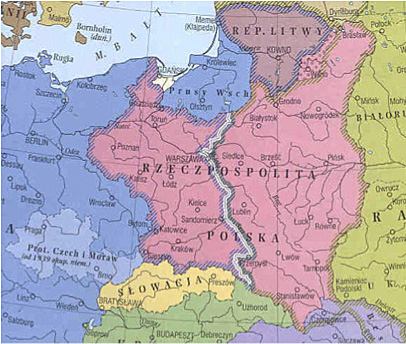
I also disagree with Kilzer that had Churchill made peace with Hitler, the 50 million lives of World War II, including 6 million Jews, could have been saved. If an Anglo-German understanding had been reached in 1941, perhaps all of the conquered territories of Western Europe may have regained their freedom. (Hitler was prepared to do so if only England would have signed a peace treaty and given him a free hand in the east.) So, England and Western Europe would have preserved their freedom and independence, but that was it. Hitler would have proceeded with Operation Barbarossa and the conquest of the East as he had planned, and with the extermination of the Jews with even with more confidence as he had pledged to do in Mein Kampf. England has nothing to fear from the truth; after all, at the time of Operation Barbarossa, it was not England but Nazi Germany and Soviet Russia who were allies, those mutually back-stabbing signatories of the shameful 1939 Molotov-Ribbentrop Non-Aggression Pact, in which the partners dismembered the Baltic states and Poland (map, above right, showing division of Poland).
Great Britain has nothing to fear from the revelation of this deception and Winston Churchill’s legacy is secure!
Read Part I.
Written by Dr. Miguel A. Faria
This article was published exclusively for HaciendaPublishing.com on October 25, 2011. The article can be cited as: Faria MA. World War II (Part II) — Deception and espionage. HaciendaPublishing.com, October 25, 2011. Available from: https://haciendapublishing.com/world-war-ii-part-ii–deception-espionage-and-total-war/
Portions from Parts 1 and 2 of this article were featured in RealClearHistory.com, History Live, “How Germany and Japan Could’ve Won,” February 13, 2014. For additional material, particularly supporting the RealClearHistory.com argument, watch the excellent History Channel documentaries, The Samurai and the Swastika (2000) and The Last Secrets of the Axis (2001).
Copyright © 2011 by Miguel A. Faria, Jr., MD
3 thoughts on “World War II (Part II) — Deception, Espionage, and Total War”
The Japanese had few natural resources of their own. When they began incursions into China and other Asian areas in 1937, the United States responded through embargoes on steel, iron, and aviation fuel sales to Japan. The hope was to stop Japanese aggression. It had the opposite effect since Japan realized it could obtain these resources from the areas it conquered. The United States together with the Dutch and the British chose to cut off oil to Japan. Japan imported 90% of its oil and this embargo, it was hoped, would have a crippling effect on its ability to wage war. https://discover.hubpages.com/politics/True-History-and-the-Lies-We-Were-Told-Japanese-Attacked-the-US-Mainland?fbclid=IwAR21XVJfM2OBCtbVTvC3ffGVrfBry5pMLJx20GxXbw8KRxJLOfnD9C-PL5c
Today in history: July 13, 1943— Largest tank battle in history ends. The Battle of Kursk, involving some 6,000 tanks, two million men, and 5,000 aircraft, ends with the German offensive repulsed by the Soviets at heavy cost.
In early July, Germany and the USSR concentrated their forces near the city of Kursk in western Russia, site of a 150-mile-wide Soviet pocket that jutted 100 miles into the German lines. The German attack began on July 5, and 38 divisions, nearly half of which were armored, began moving from the south and the north. However, the Soviets had better tanks and air support than in previous battles, and in bitter fighting Soviet antitank artillery destroyed as much as 40 percent of the German armor, which included their new Mark VI Tiger tanks. After six days of warfare concentrated near Prokhorovka, south of Kursk, the German Field Marshal Gunther von Kluge called off the offensive, and by July 23 the Soviets had forced the Germans back to their original positions…—- This Day in History 😎
But there was more to this than tank warfare. There were traitors in the Third Reich and espionage via the Red Orchestra that helped Stalin tremendously. As I wrote: “What information did the spy-traitor Werther provide to Moscow Center that was so vital to the Soviets? No less than very detailed and specific military intelligence that led to the defeat of the Wehrmacht at the pivotal Battle of Stalingrad in the winter of 1942-43 and the decisive Battle of Kursk (i.e., the largest tank battle in history) during the spring and early summer of 1943, from which the Third Reich did not recover the initiative in the Eastern front.
The only question remaining is this: Why did Martin Bormann not seek a timely escape route to communist Russia before the final collapse of the Third Reich? That is the sixty-four million dollar question. He might have been guarding his identity even from the Soviets. To escape, he attempted, but to surrender, he probably thought would be futile! He had interpreted and carried out the Fuhrer’s order of genocide of the Jews during the Holocaust and the elimination of the Ukrainians during the Wehrmacht drive to the east. And his betrayal was ideological, but we will probably never have all the answers.— Dr. Miguel Faria, https://haciendapublishing.com/world-war-ii-part-ii-deception-espionage-and-total-war/
——–
Battle of Prokhorovka (part of Battle of Kursk) 12 July 1943— Known as the largest tank battle in military history, the Battle of Prokhorovka saw 800-850 tanks of the Soviet army line up against the significantly smaller force of the Germans. Russian sources put the German number of tanks between 500 and 700. Although figures from German sources are not available, the real number is likely to have been far less, with 294 German tanks having been listed as available the day before the battle. After fierce and intense fighting, resulting in many dead and wounded, the outcome of the battle was not immediately clear. The Russians claimed a propaganda victory, particularly due to the fact that Hitler had been forced to call off the attack on the Kursk salient. Clearly, the Soviets were far from finished as a force in the war and the tide was beginning to turn away from the Germans. Copyright © 2014 · Military Education – A Non-Government Military Educational Resource
The Battle of Kursk, my take! This is based on a discussion we had on Macon Telegraph Viewpoints (8-3-11, and I think it is worth recording here. I wrote that in the Eastern Front, WW II, the Battle of the Kursk Salient was a dramatic clash of arms between the German military and the Soviets led by Marshall Zhukov in the Spring and early Summer of 1943:
Order of Battle: Eastern Front, Battle of Kursk Salient, Largest tank Battle in history.
German commander: Field Marshall Erich von Manstein (directly under Hitler, the Fuhrer)
Russian commander: Marshall Georgy Zhukov (under Stalin, Generalissimo)
The Germans had 800, 000 men; the Russians, over 2 millions.
The Germans had 3000 tanks and big (assault) guns. The Russians threw 10,000 plus tanks and big (assault) guns.
Casualties: Germans, slightly over 200,000 men; The Russians almost a million men!
Destroyed tanks and assault guns: Germans, 720; Russians, 6000 destroyed.
The Russians had highly placed spies (“werther, ” play back funkspiel, and “the red orchestra”) and knew all of the German plans. We might have even helped the Soviets by sending decoded enigma codes, as well.
The Russians won a technical but decisive military victory! Those 700 tanks lost by the Germans to land mines strategically placed because of human intelligence (i.e., Highly placed traitors in the German High Command spied for the Soviets) made all the difference. With US supplies and assistance the Russians could afford to lose 6000 tanks but the Germans could not afford to lose 700!).
Addendum—
Espionage: The book Hitler’s Traitor by Pulitzer Prize winner, Louis C Kilzer is recommended for espionage assistance to the Russians mentioned above.
Assets and casualty figures: They have been rounded up (and tanks and big assault guns combined for convenience) and are based on estimates from various sources— all of which showed that the Russians had the advantage in both material and men. Casualties were extremely high, and it is known that like in Stalingrad, the Russian soldiers were used as “cannon fodder” to overwhelm the Germans. But as I stated, the Russians won at both battles, and it was the beginning of the end for Nazi Germany, which also had to defend Italy from the Allied invasion and troops had to be pulled back from Russia to Sicily! — Dr. Miguel Faria. Wikipedia also had an excellent entry and it is recommended.
Faria MA. World War II (Part I) — The German strategic plan. HaciendaPublishing.com, October 18, 2011. Available from: https://hacienapublishing.com/world-war-ii-part-i–the-german-strategic-plan/
Faria MA. World War II (Part II) — Deception and espionage. HaciendaPublishing.com, October 25, 2011. Available from: https://haciendapublishing.com/world-war-ii-part-ii–deception-espionage-and-total-war/
Portions from Parts 1 and 2 of this article were featured in RealClearHistory.com, History Live, “How Germany and Japan Could’ve Won,” February 18, 2014. Available from: https://haciendapublishing.com/how-germany-and-japan-couldve-won-by-miguel-a-faria-md/
For additional material, particularly supporting the RealClearHistory.com argument, watch the excellent History Channel documentaries, The Samurai and the Swastika (2000) and The Last Secrets of the Axis (2001).